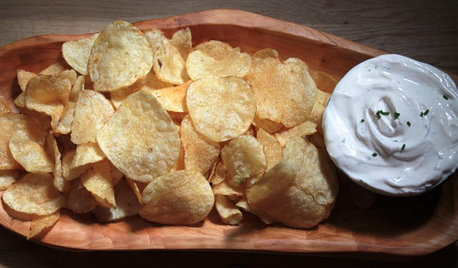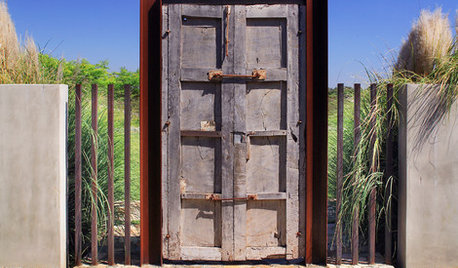Wood chips and nitrogen
alabamatreehugger 8b SW Alabama
16 years ago
Related Stories

SHOP HOUZZShop Houzz: It’s Chip and Dip Time!
There’s a chip and dip set that’s perfect for any occasion, from formal to casual
Full Story
DECORATING GUIDESLoving Color: 5 Ways to Decorate With Paint Chips
Turn those also-ran paint strips into conversation-starting art and accessories for your home
Full Story
MATERIALSMesquite: The Brawny Beauty for All Over the Home
Denser than other hardwoods and sporting beautiful coloration, mesquite makes a fine material for flooring, countertops, furniture and more
Full Story
KITCHEN CABINETSGet the Look of Wood Cabinets for Less
No need to snub plastic laminate as wood’s inferior cousin. Today’s options are stylish and durable — not to mention money saving
Full Story
MATERIALSRaw Appeal: 9 Wonderful Ways With Natural Wood
Go with the grain and use minimally finished wood for gorgeous accent walls, artwork and more
Full Story
WHITE KITCHENS4 Dreamy White-and-Wood Kitchens to Learn From
White too bright in your kitchen? Introduce wood beams, countertops, furniture and more
Full Story
REMODELING GUIDESPro Finishing Secret: Aniline Dye for Wood
Deeper and richer than any stain, aniline dye gives wood stunningly deep color and a long-lasting finish
Full Story
COLOR11 Terrific Paint Color Matches for Wood Details
Pair your wood trim and cabinets with the right shade of wall paint to bring out the beauty in both
Full Story
REMODELING GUIDESWood Floor Care: Polish Your Skills
Help your wood floors stay gorgeous by learning how to keep stains, dullness and warping at bay
Full Story
TILETop Tile Trends From the Coverings 2013 Show — the Wood Look
Get the beauty of wood while waving off potential splinters, rotting and long searches, thanks to eye-fooling ceramic and porcelain tiles
Full StorySponsored
Your Industry Leading Flooring Refinishers & Installers in Columbus
More Discussions







razorback33
fatamorgana2121
Related Professionals
Danbury Landscape Architects & Landscape Designers · Forest Acres Landscape Architects & Landscape Designers · Kenmore Landscape Architects & Landscape Designers · Towson Landscape Architects & Landscape Designers · Brooklyn Center Landscape Architects & Landscape Designers · Mount Sinai Landscape Contractors · Thonotosassa Landscape Contractors · Wentzville Landscape Contractors · Yukon Landscape Contractors · Eastlake Landscape Contractors · Millbrae Fence Contractors · Reisterstown Fence Contractors · Cypress Siding & Exteriors · Tooele Siding & Exteriors · Yakima Siding & Exteriorsalabamatreehugger 8b SW AlabamaOriginal Author
bob64
alabamatreehugger 8b SW AlabamaOriginal Author
bob64
bob64
alabamatreehugger 8b SW AlabamaOriginal Author
ladyslppr
bob64
alabamatreehugger 8b SW AlabamaOriginal Author
botann
mdvaden_of_oregon